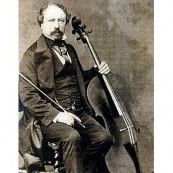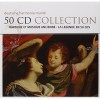Composers
Adrien-François Servais (6 June 1807 – 26 November 1866) was one of the most influential cellists of the nineteenth century. He was born and died in Halle, Belgium. He is one of the founders of the Modern Cellistic Schools of Paris and Madrid, which began with his friend Auguste Franchomme and his disciple Víctor Mirecki Larramat. His compositions are still being studied, performed and recorded all over the world
Servais was originally trained as a violinist before switching to the cello. Known by his contemporaries for his virtuosity and excessive vibrato, he was given the gift of a Stradivarius cello from 1701, which today bears his name. He is also known as the first cellist to adopt the bassists' use of an endpin because of the large size of his Stradivarius.[2] (The use of the endpin was, however, not generally adopted by most cellists until the early 20th century. For instance, Carlo Alfredo Piatti never used an endpin.) He composed numerous works for his instrument, including four concerti and nearly twenty duos for two cellos or for cello and violin. Hector Berlioz later referred to Servais as "the Niccolò Paganini of the cello".
Some years after his death in 1866, Servais was honored by his home town of Halle, where a statue of him was placed on its central market square by his son-in-law, Professor Cyprian Godebski.
Biography
Adrien-François Servais (6 June 1807 – 26 November 1866) was one of the most influential cellists of the nineteenth century. He was born and died in Halle, Belgium. He is one of the founders of the Modern Cellistic Schools of Paris and Madrid, which began with his friend Auguste Franchomme and his disciple Víctor Mirecki Larramat. His compositions are still being studied, performed and recorded all over the world
Servais was originally trained as a violinist before switching to the cello. Known by his contemporaries for his virtuosity and excessive vibrato, he was given the gift of a Stradivarius cello from 1701, which today bears his name. He is also known as the first cellist to adopt the bassists' use of an endpin because of the large size of his Stradivarius.[2] (The use of the endpin was, however, not generally adopted by most cellists until the early 20th century. For instance, Carlo Alfredo Piatti never used an endpin.) He composed numerous works for his instrument, including four concerti and nearly twenty duos for two cellos or for cello and violin. Hector Berlioz later referred to Servais as "the Niccolò Paganini of the cello".
Some years after his death in 1866, Servais was honored by his home town of Halle, where a statue of him was placed on its central market square by his son-in-law, Professor Cyprian Godebski.



